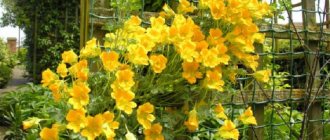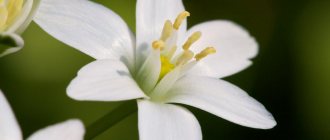Coniferous species are undemanding, retain their decorative habit all year round, and have a beneficial effect on the air and the environment. Planting a cypress tree on a personal plot will decorate the area; the plant will delight you with its evergreen needles for up to 300 years. Compliance with recommendations on agricultural cultivation techniques will preserve the crop’s resistance to adverse factors, which will greatly simplify care.
Cypress: description
Formosan, blunt, pea-bearing and mourning cypress are native to East Asia, and Lawson, Nootkan and arborvitae are native to North America. In its natural habitat, a coniferous tree grows up to 70 m in height. The needles are scaly, small, but dense. Unlike cypress trees, cypress trees are more resistant to harsh winters.
The cone-shaped crown consists of outstretched or drooping branches. The bark is brown or brown, covered with small scales. In young specimens the leaves are needle-shaped, in adults they are scale-like. The color varies depending on the variety; it can be green, bluish-smoky, yellow-green or deep green.
The cones are round, up to 12 mm in diameter. Ripe seeds can be planted directly this season.
Features of the plant
Cypress trees resemble their fellow cypress trees in appearance. But if they are able to grow exclusively in the tropics and subtropics, the younger brothers will withstand any, even the most severe cold snap. These plants are widely used in the Northern Hemisphere.
Cypress trees can grow into fairly tall trees, so at home you should only grow young plants while they have soft needles. They will add 3-4 cm in height every year and will be able to stand in the room for a whole decade.
Young trees have soft and delicate needles, a pleasant bluish-gray color. As she grows older, she darkens. The bark is an attractive brown-red color, but due to the needles it is almost invisible.
By placing such an evergreen pet in your home, there will be no need to buy a Christmas tree.
Cypress: types
Let's look at the seven most common types of cypress.
Lawson's cypress is a native of North America. A tall tree, in nature it grows 70 m in height, but in garden conditions its dimensions are more restrained. A narrow cone-shaped crown, narrowed at the top and wider at the bottom. A notable feature of the species is the tip tilted to its side. The lower branches can fall straight to the ground. The scales are clearly visible on the brown bark. The needles are glossy and green. The light brown cones have a noticeable bluish coating.
Lawson's cypress
Cypress pea is a coniferous plant 30 m high, native to Japan. The trunk of the crop is colored brown; if you look closely, a red tint is noticeable. The crown is openwork, due to the fact that the branches are located horizontally, the crown is wide and has the shape of a cone. The needles are gray, small cones are yellow-brown.
Thuja cypress is a native of North America. In the wild, the tree can reach 25 m in height. The trunk has a girth of 1 m. The crown is narrow, cone-shaped. Red-brown bark. It is noteworthy that when you rub dark blue or light green needles, a peculiar aroma emanates from it.
The blunt cypress is a native of Japan. The height of the tree in natural conditions is 50 m, the girth of the trunk is 2 m. The smooth bark is colored light brown, the shoots are dense, the top is slightly inclined to the side. The leaf plates are pressed against the shoots.
Cypress: varieties
Thanks to breeding work, numerous varieties have been developed, each of which is worthy of special attention.
Lawson Elwoodi cypress is a coniferous perennial reaching 3 m in height. The branches are straight, slightly drooping. The needles are blue. You can find different forms: Elwoody White cypress , Elwoody Gold.
Cypress Nana is an interesting variety, and also slow-growing. Over 50 years of development, the plant does not exceed 50 cm in height. Cypress Gracilis Nana has small blue needles.
Cypress Nana
Cypress Filifera is a medium-sized plant, 5 m high. It grows slowly. The wide crown is made up of drooping or drooping shoots. Gray-green needles.
Boulevard cypress is a coniferous plant with a pin-shaped crown. It reaches a height of 5 m and above. The needles are bent inward and painted silver-blue. The older the tree, the faster it grows. Recommended for growing in warm regions, as the variety has poor resistance to low temperatures.
Blue Moon cypress is a pea-bearing species. The crown is dense, spherical. The branches are rigid and shortened. It reaches 120 cm in height and diameter. The annual growth of green mass is 10-12 cm. Blue-steel needles. Prefers to grow in sunny areas.
Cypress Yvonne has an interesting crown structure - fan-shaped. Red-brown bark. Small scales. It cannot be grown in partial shade, as the crown becomes lightened.
Care errors
If you do not follow the regime necessary for a coniferous plant, the needles will begin to turn yellow and the tree itself will dry out. To prevent this from happening, keep an eye on:
- air humidification;
- lack of sunlight on the needles;
- low air temperature;
- not drying out of the soil mixture;
- regular feeding.
If you do everything correctly, your green friend will delight you with juicy and healthy pine needles.
Cypress: planting and care
Planting a cypress tree must follow all the rules required by the culture.
Cypress planting and care
Choosing a time and place to land
It is better to plant cypress trees in partial shade, not in bright sun. But places in lowlands should not be considered. The fact is that the lower the area, the greater the stagnation of cold air, and culture does not like this.
Attention!
When planting and choosing a location, you should take into account the color of the needles. Cypress trees with greenish-yellow needles need more light than specimens with green or light blue crowns.
Coniferous trees prefer to grow on fertile soil that has good air permeability. Do not plant in calcareous soil. The seedlings are planted in the spring in a hole prepared in the fall.
The depth of the hole is 90 cm, width is 60 cm. At the bottom of the hole you need to put a layer of expanded clay 20 cm thick, sprinkle the drainage layer with soil:
- 3 parts humus;
- 3 parts of turf land;
- 1 part sand;
- 2 parts peat.
Over the winter, the soil mixture will completely rot and will be ready for planting coniferous seedlings. When planting, it is important to maintain a distance of 100 cm between plants, since the root system is located in the upper layers of the soil and grows horizontally.
Rules for planting seedlings
After purchasing a seedling from a special nursery, a lump of earth is watered with a root solution. To do this, take 5 liters of water and dissolve 1 package of the product in it. A similar solution should be poured into the planting hole.
Boulevard cypress
After removing the conifer from the container, preferably with a lump of earth, you need to place the seedling in the center of the hole and sprinkle it with soil to the top. It is recommended to add 30 g of nitroammophoska to a soil mixture consisting of 3 parts humus, 3 parts turf soil, 1 part sand and 2 parts peat.
Attention!
During planting, the root collar should not be buried - it should protrude 10-15 cm above the soil level.
After planting, the seedlings are watered and soil is added, as it will certainly shrink. It is necessary to fill it up to the level of the root collar so that it is at the level of the soil.
How indoor cypress propagates
How to grow a beautiful cypress yourself? It can be propagated in several ways. In this case, vegetative methods are preferable, since germination of seeds not only takes a lot of time, but also does not guarantee the preservation of varietal qualities.
Germination of seeds
Evergreen cypress - what it is and what it looks like
The cypress seed is first stratified. To do this, it is placed in a container with a mixture of sand and peat and placed in the refrigerator. After 2.5 months, the vessel is removed and placed in a well-lit place at a temperature of about +20°C. Greenhouse conditions are created for the seedlings, covering them with cellophane or glass. From time to time, the greenhouse is ventilated and the seedlings are watered. Young cypress trees are planted when their height reaches at least 5 cm.
Rooting cuttings
Propagation of the green beauty is also possible by rooted cuttings. For this method, last year's shoots are used as planting material.
Attention! A cutting that is in the active growth stage takes root very poorly.
Reproduction by rooting cuttings
It is best to take shoots from 5 to 15 cm long. Remove all the needles from their lower part and place them in a pre-moistened mixture of peat and sand. Using a glass jar or cellophane, create greenhouse conditions and place the container in a well-lit place. Periodically, the greenhouse must be ventilated and the seedling watered, and accumulated condensation must also be removed.
Air layering
This technique is used mainly for cypresses with a spreading crown, since upright ones produce twisted seedlings. Another container with nutritious soil mixture is placed near the adult bush. The plant branch is bent and secured with a metal bracket, after which it is sprinkled with soil and moistened. The cuttings are periodically watered, the soil is loosened and the ground part is sprayed. When the root system is formed, the cuttings are cut off from the mother bush.
Other options
Today, other methods of propagating indoor cypress are not used because they do not give the expected results. The plant does not form root shoots.
Caring for cypress in the garden
Proper care is based on 4 postulates: timely watering, loosening the soil, fertilizing and pruning.
Watering
Cypress is a moisture-loving plant. In the absence of natural precipitation, it is necessary to water once every 7 days, pouring 10 liters of water under one specimen. The frequency of watering depends on the weather. When it is too hot and dry, you need to water it 2 times a week.
The culture loves high humidity. Adult specimens need to be sprayed once a week, and young bushes – daily.
To keep the soil moist longer, you will need to add a mulching layer of wood chips or peat. In this case, watering is carried out no earlier than the top layer of soil in the tree trunk has dried out. If plants are grown without mulch, after each watering the soil is loosened and weeds are removed.
Fertilizer application
2 months after planting in open ground, fertilizing is carried out. For these purposes, you need to use a complex fertilizer, diluted in half the concentration than stated in the instructions.
Cypress Yvonne
Adult coniferous plants need to be fed with complex mineral fertilizer once every 14 days, until mid-July.
Experts recommend choosing Kemira for conifers for feeding. Before watering the plantings, 150 g of the product is scattered in the tree trunk circle and mixed with the soil. After this, watering is carried out so that the fertilizers dissolve and can be absorbed by the root system.
From mid-July, all feeding is stopped so that the conifers can prepare for winter.
Transfer
The procedure for transplanting plants to another place is no different from planting seedlings. All manipulations must be carried out in the spring. When digging up a tree, you must take into account that the root system of the cypress tree is horizontal, so you need to grab the lump as far as possible from the trunk.
Trimming
When growing cypress on a site, it is recommended to systematically form the crown. Immediately after the snow melts, you need to inspect the plantings and cut off the tips of branches that have been damaged by frost. In addition, it is necessary to remove all old and damaged shoots and dry branches. After sanitizing, you should begin to form the crown. It is important to maintain the shape of the crown in the form of a cone or pyramid.
Attention!
When pruning at one time, you should not remove more than 1/3 of the green mass!
At the end of the growing season, another formative pruning is carried out. At this time, you need to cut off 1/3 of the young growth. It is necessary to form the shape of the crown 12 months after planting the seedling in open ground.
Growing
Cypress, like other coniferous plants, needs fresh air. In summer, it is useful to take pots of indoor Cypress trees out into the open air. At the same time, they are planted in front gardens and terraces. Some specimens may not be brought into the house until late autumn.
The plant prefers moderate temperatures in the warm season, and cool in winter.
IN THE PHOTO: Despite its southern origin, Cypress does not tolerate extreme heat.
In December, it is advisable to move the Cypress trees to a glassed-in, unheated balcony. They winter best at slightly sub-zero temperatures.
The room in which the shrub or tree is located should be well lit. But it is not recommended to leave Cypress on the south side in the summer: under the influence of direct sunlight, the needles begin to turn yellow and dry out. In winter, “soft” sun will not harm the crown, so you can place the plant near a south-facing window.
The cypress tree easily tolerates a small shade: when choosing between a place with too bright lighting and partial shade, it is recommended to choose the second one. In this case, exposure to sunlight will be more gentle.
An exception to this rule is the Cypress form with yellow needles - for full growth and high decorativeness, they need direct sunlight.
Cypress trees need moist air, so regular spraying (at least once a week) should not be neglected.
Diseases and pests
Despite their unpretentiousness to growing conditions and resistance to various diseases and pests, cypress trees are still susceptible to attack by spider mites, scale insects can appear, and the plant is also subject to root rot.
Evidence that a coniferous tree is suffering from the activity of spider mites is the yellowing of the needles followed by their falling off. Chemicals such as Nissoran, Apollo, Neoron are used to control pests. Acaricides should be used in accordance with the instructions. The frequency of treatment for treatment is 3 times with an interval of 7-8 days.
Scale insects are a difficult pest to remove. Feeds on cell sap. The trees begin to turn yellow, the needles fly off. To eradicate the pest, it is necessary to spray the plantings with Nuprid 3-4 times. In case of massive damage, it is unlikely that it will be possible to get rid of the pests. In this case, it is recommended to dig up the plant and burn it to prevent scale insects from moving onto healthy specimens.
Overwatering can cause root rot. To prevent fungal disease, it is recommended to add a good drainage layer before planting the conifer.
If the disease is not detected in a timely manner, it is not possible to save the plant. If the problem is detected in time, it is necessary to remove the crop from the ground, inspect the root system, and remove damaged roots. After all the manipulations, the sections are smeared with brilliant green, and the root system itself is treated with fungicides. Planting after resuscitation is carried out in another place where moisture does not linger for a long time. If root rot has affected the entire root system, it cannot be cured; the plant must be burned.
Reproduction by seeds, cuttings, layering
Gardeners use 3 methods of propagating cypress. When propagated by seed, the plant does not repeat the maternal characteristics. The easiest way is layering, and the most reliable is cuttings.
Seed propagation
Thuja cypress
Seeds of cypress have a long shelf life - 15 years, but this is subject to proper collection and storage. Before sowing, the seeds must undergo stratification, this will increase the germination percentage.
After filling the container with light, breathable soil, you need to sow the seeds and cover with a layer of soil. The container with plantings must be buried in the snow. In this form, the seeds should overwinter and wait until spring. You can store the container in the refrigerator on the bottom shelf.
In spring, a container with seeds is brought into the house, germination occurs at a temperature of +20-22°C. The container should be placed on a bright windowsill, but avoid exposure to midday sun. With proper stratification, after bringing the container into the house, shoots will appear quickly.
If the seedlings grow too densely, it is recommended to thin out the plantings so that the remaining seedlings begin to develop faster. Watering should be moderate. As soon as the weather becomes warm outside, the seedlings must be taken out into the fresh air so that they can harden.
For the winter, plants are planted in open ground and covered so that young specimens can overwinter.
Propagation by cuttings
In the spring, during the next formative pruning, cuttings must be cut. Planting material should be taken only from healthy plants. The cuttings should be young, not lignified. Both short and long cuttings root equally well. The very bottom of the cuttings must be freed from needles.
Planting is carried out in pots filled with a mixture of sand and perlite, taken in equal proportions. You can add crushed pine bark to the same mixture.
In greenhouses, cuttings take root quickly. Within a month or two, callus forms at the end of the cuttings, then roots. To be effective, you will have to maintain air humidity at 100%.
The cuttings can be planted immediately in a permanent place. After planting, the cuttings are covered with cut plastic bottles without necks. With good development, young seedlings will easily survive the winter under cover.
Attention!
If the cuttings develop slowly, they must be moved indoors for wintering.
Reproduction by layering
Plants whose branches creep or spread horizontally can be propagated by layering. To carry out the procedure, select a stem located close to the ground.
On the selected shoot you need to make a small cut and insert a match so that it does not close. Next, you will have to lean the branch against the ground so that the cut touches the surface of the soil and pin it with a staple. To prevent the shoot from lying on the ground, the top is tied to a support, and the cut site is sprinkled with soil.
Watering as the earthen ball dries out. As soon as young roots appear on the shoot, it is necessary to separate the cuttings from the mother plant and replant them in a new place.
Attention!
If roots appear on the layering by autumn, it is better to move the transplant to spring.
Secrets of culture transplantation
No matter how quickly a cypress tree grows, it is sometimes moved to a new site. The procedure is performed in early spring, when the plant is just gaining growth strength. To avoid damaging the horizontal root system, the crop is dug up very carefully. First, possible edges of the roots are marked on the surface of the earth, and then they get down to business.
When removing the plant from the funnel, it is necessary to preserve the earthen lump so that the crop takes root faster in the new place.
Knowing how to transplant a cypress tree from one container to another will help maintain its decorative properties. First, soften the soil by filling it with water. Next, carefully separate the walls of the pot from the root system. Then the bush is carefully removed. Together with the remaining soil, the cypress tree is transplanted into a new container. Fill with soil and lightly compact. The surface is watered abundantly.
Having understood the intricacies of planting, propagating and pruning cypress, many boldly grow it on their plots. The main thing is to get down to work decisively and listen to the advice of experienced gardeners.
Preparing cypress for winter
Despite the fact that any of the varieties that are resistant to frost must be covered for the winter in the first 3 years after planting. The procedure is carried out to protect the crown from freezing and from the scorching rays of the sun. To cover coniferous trees, lutrasil, burlap, craft paper, and acrylic are used.
In the Moscow region, the Urals and Siberia, the crop is not grown in open ground. If you want to decorate your area with cypress trees, they should be planted in a large pot, taken outside in the spring, and hidden in the basement in the fall. In the southern regions, the crop can be grown without shelter.
Cypress: photo in landscape design
Cypress : photo in landscape design
If you plant a cypress on your site, you can recreate a Mediterranean landscape. The crop looks beautiful framed by other plants and the site. The culture can be grown as a solitary plant and also looks good in group plantings. By planting cypress trees, you can create a beautiful hedge.
If you grow the plant in a pot, it can be used instead of a Christmas tree for the New Year.
Dwarf varieties have a spherical crown shape. They fit well into any landscape design. With their help you can create complex geometric patterns.
Growing cypress in open ground is not difficult. Caring for coniferous crops involves timely watering, fertilizing, and protection from pests and diseases. In 2-3 years, cypress forms a hedge well.











